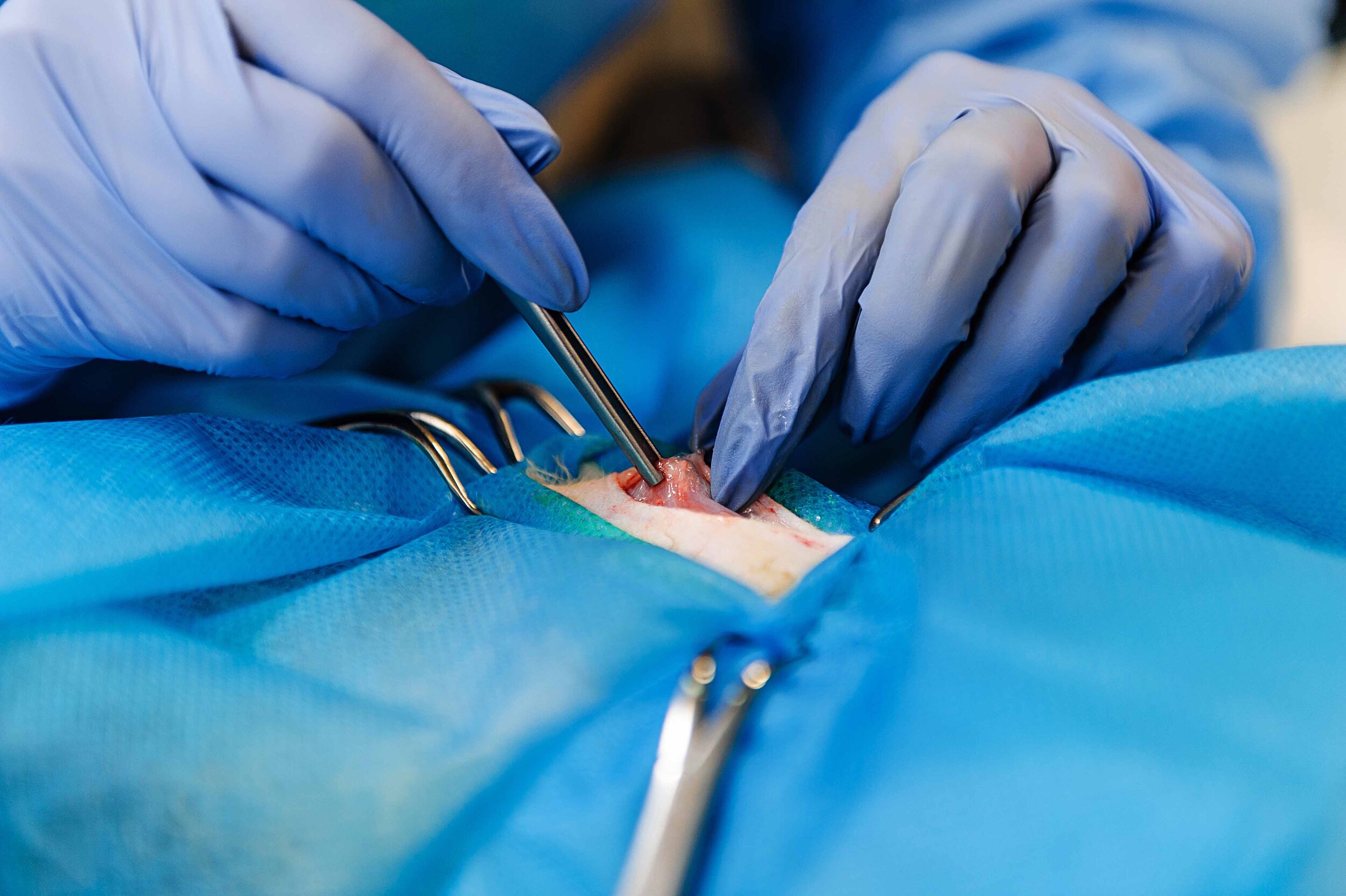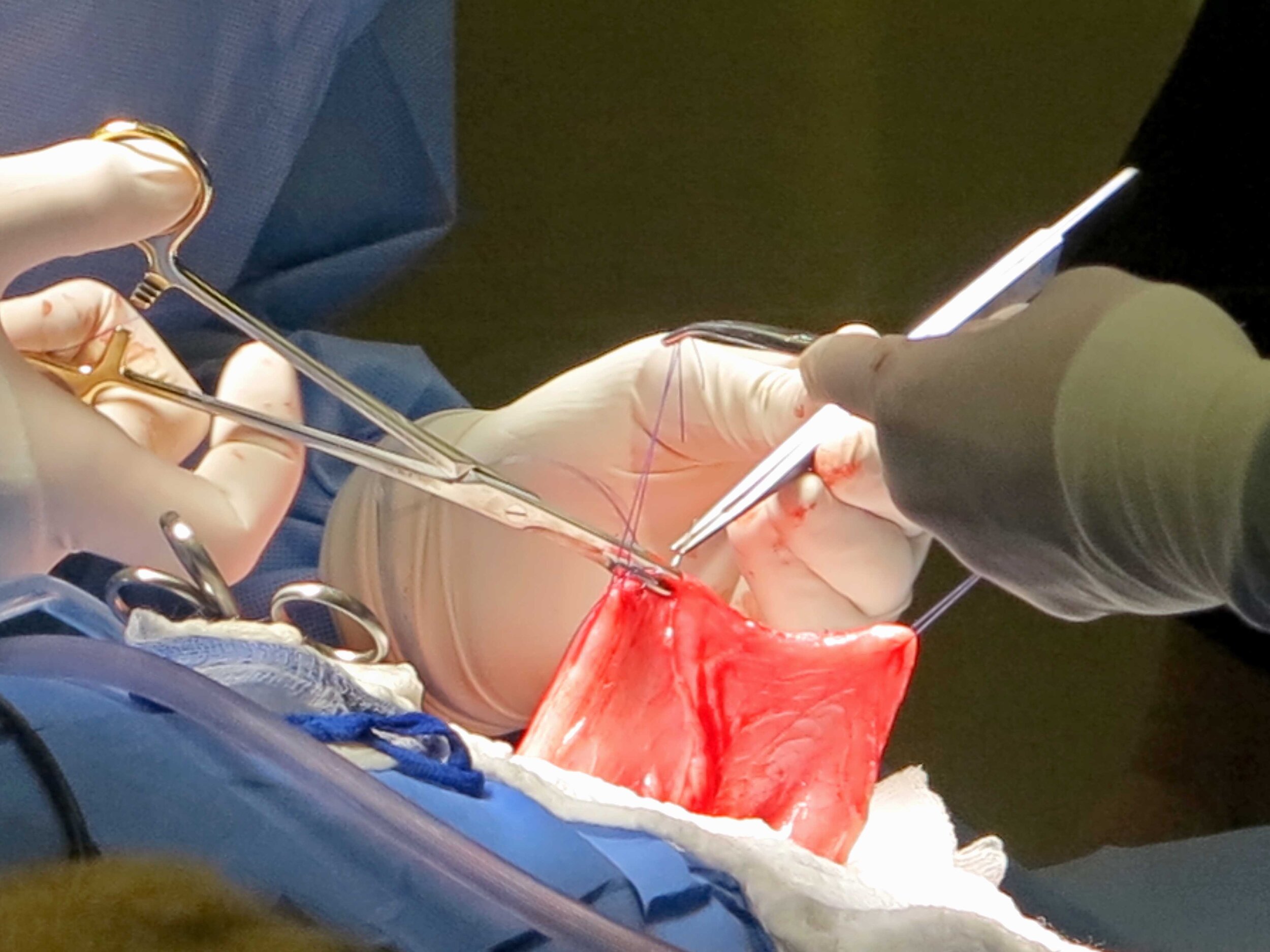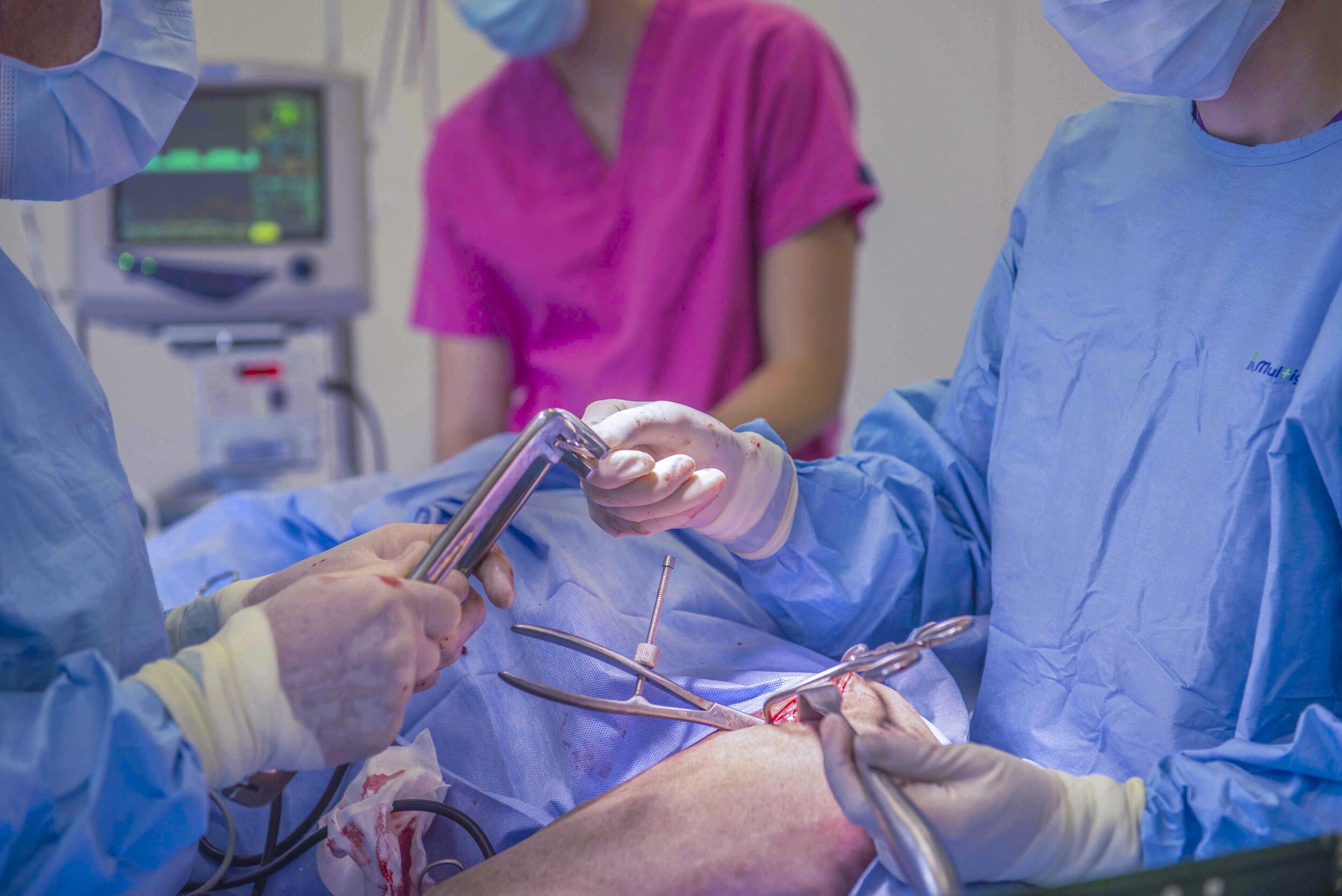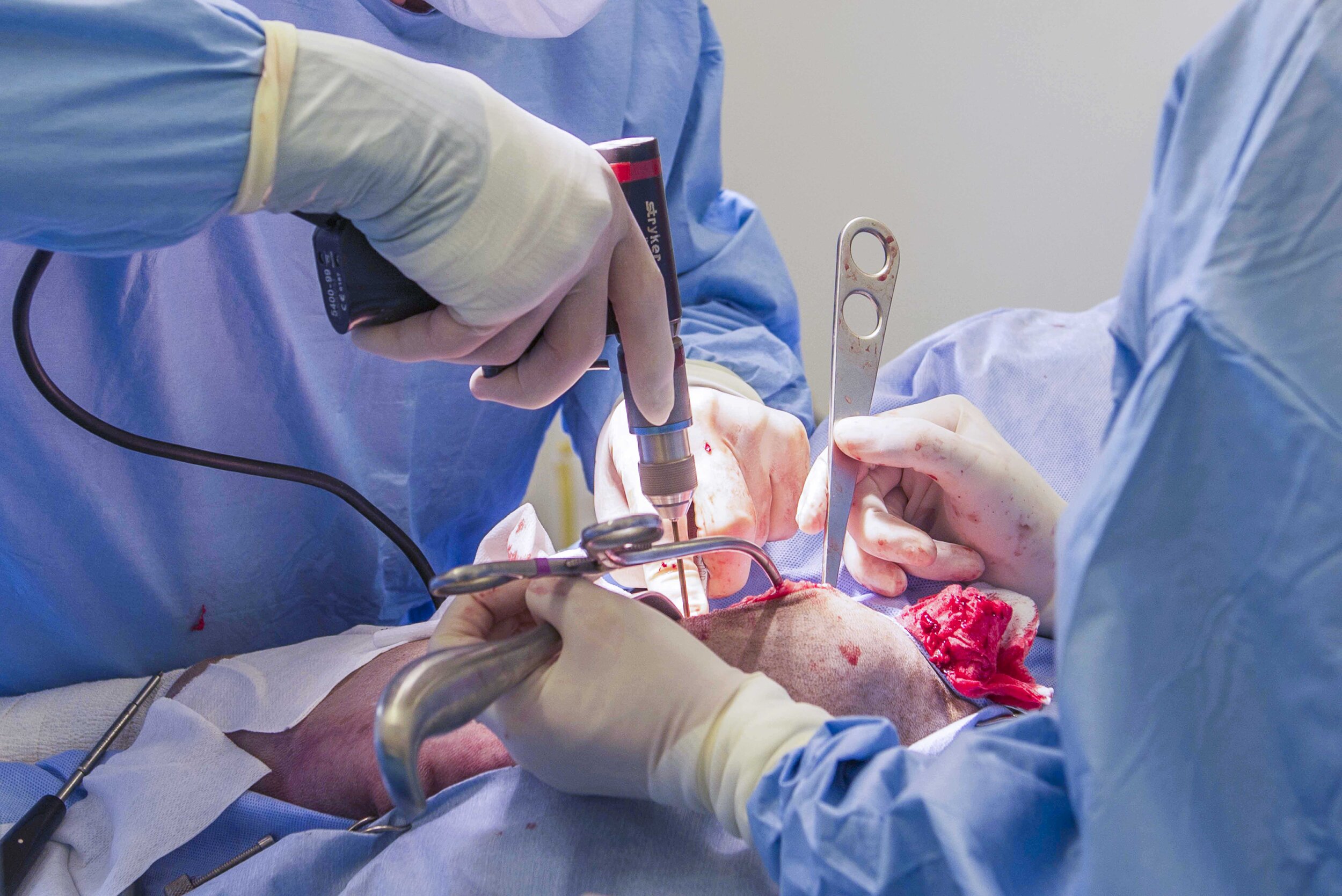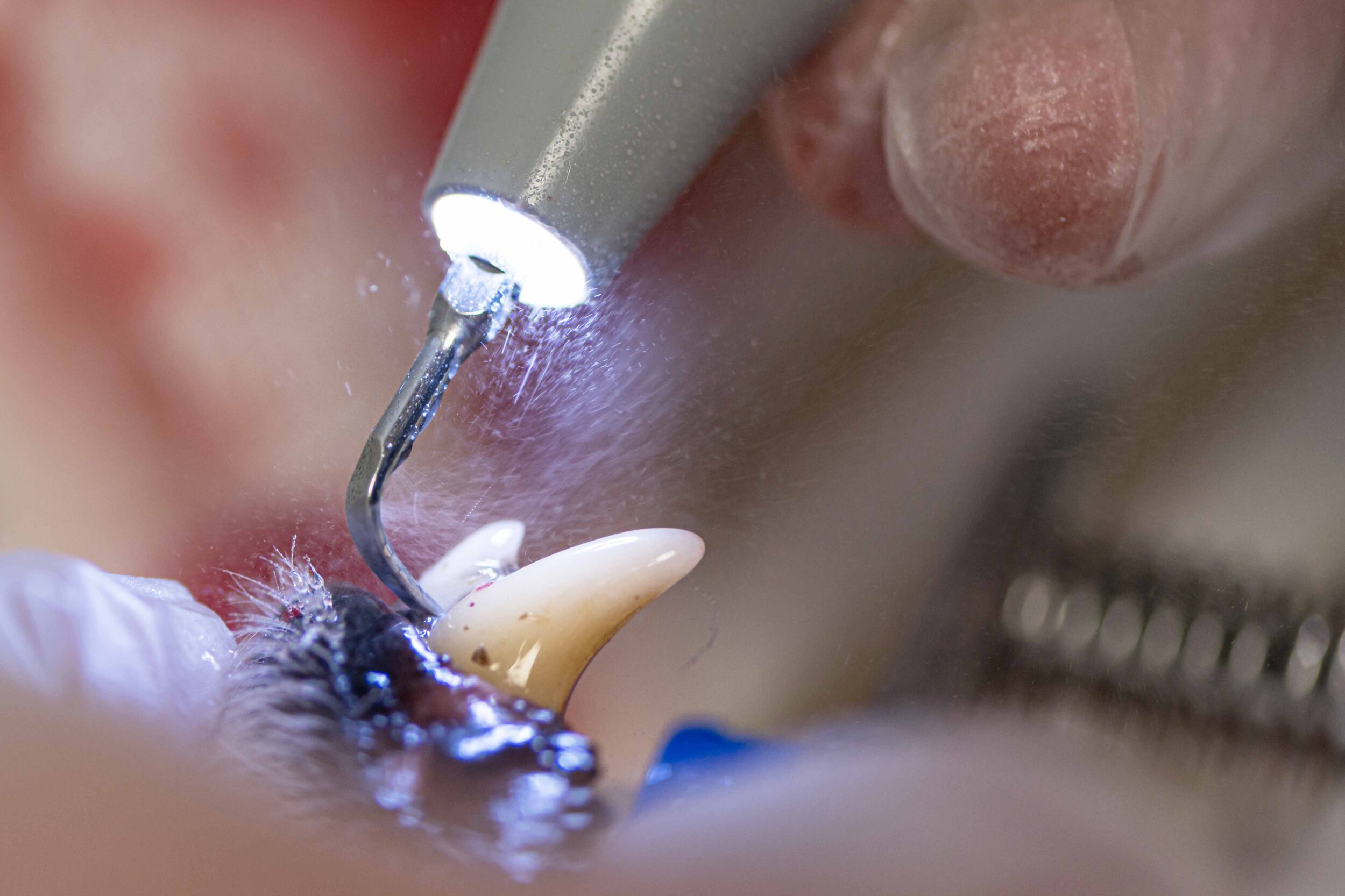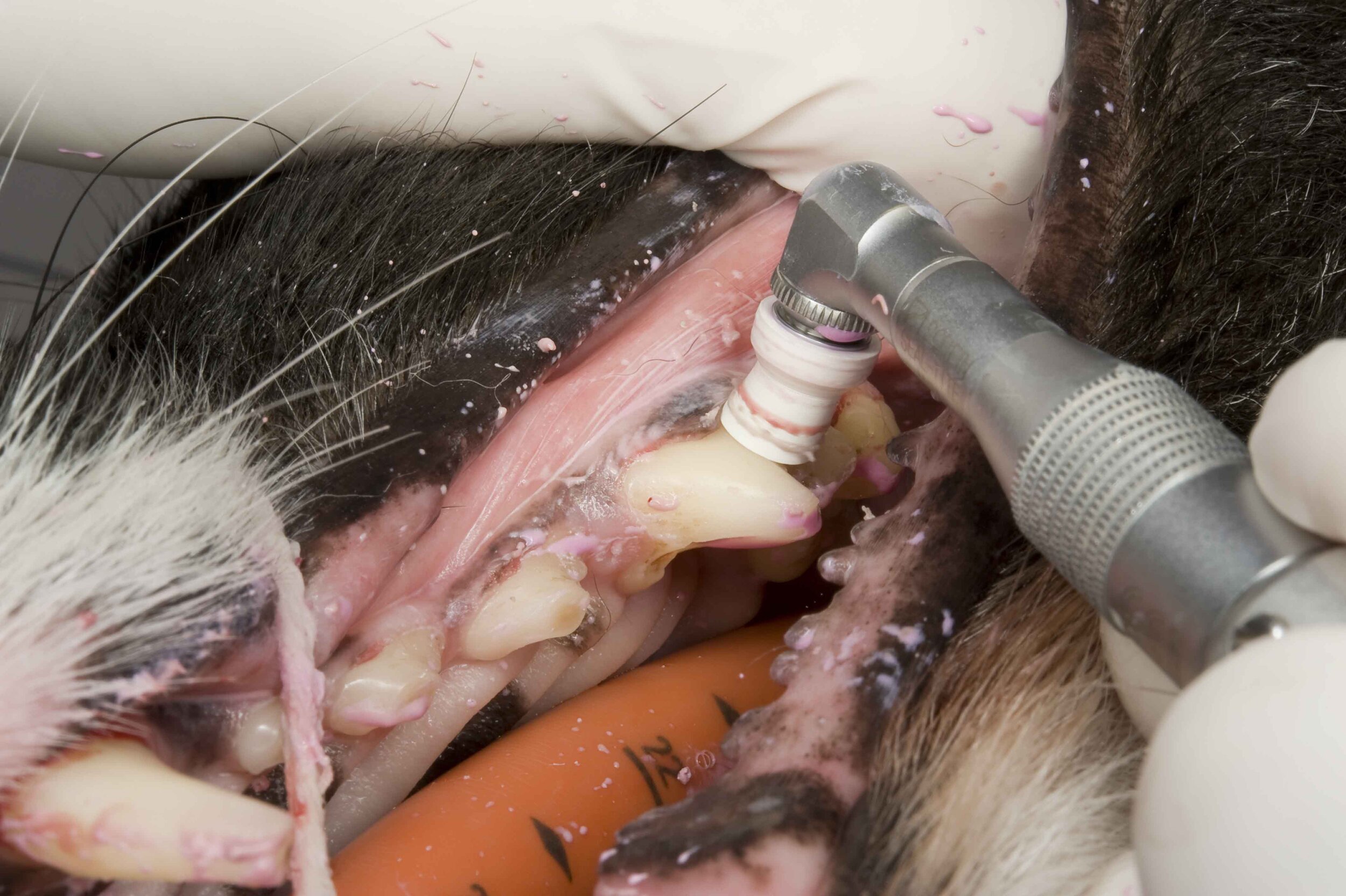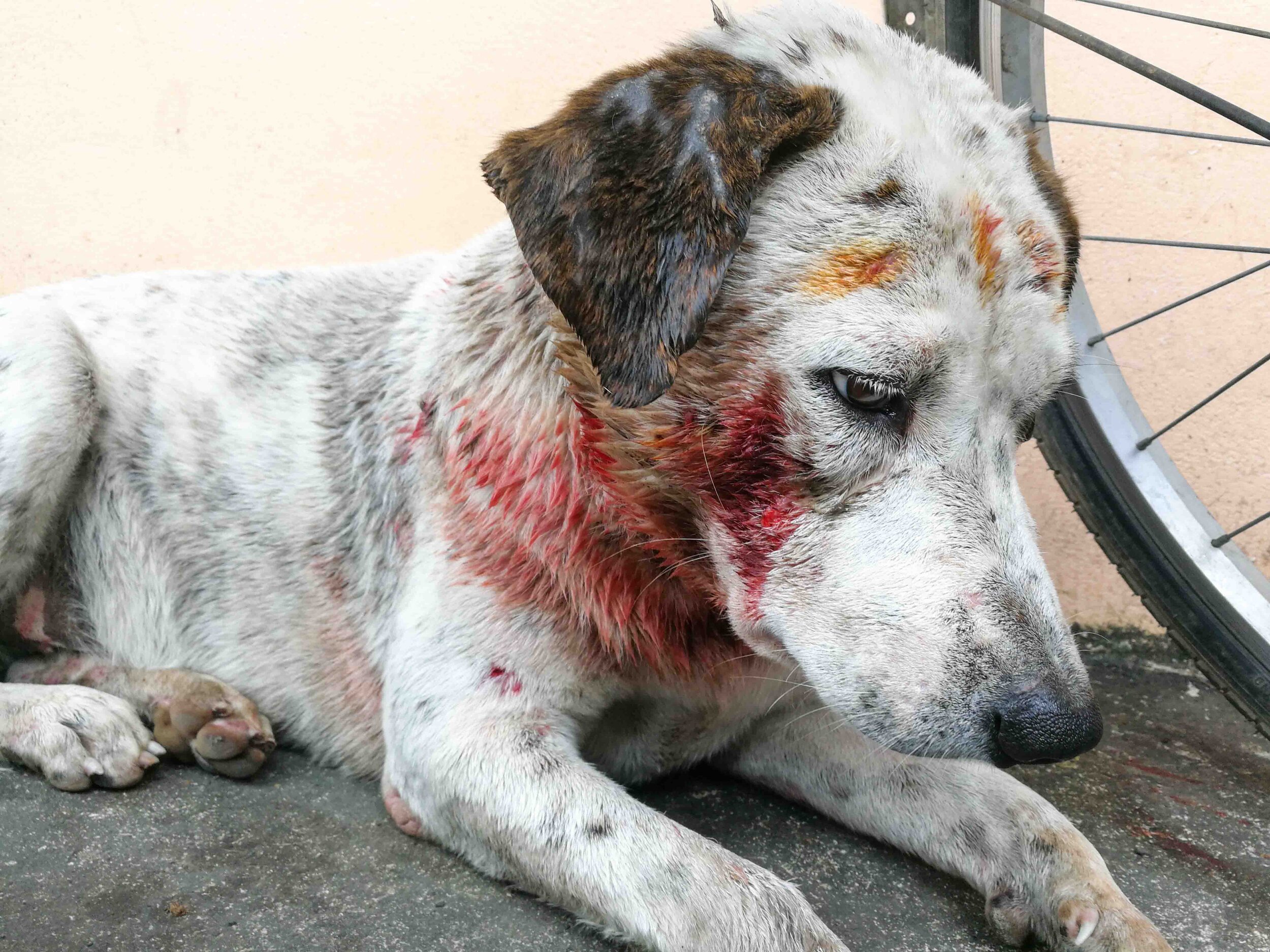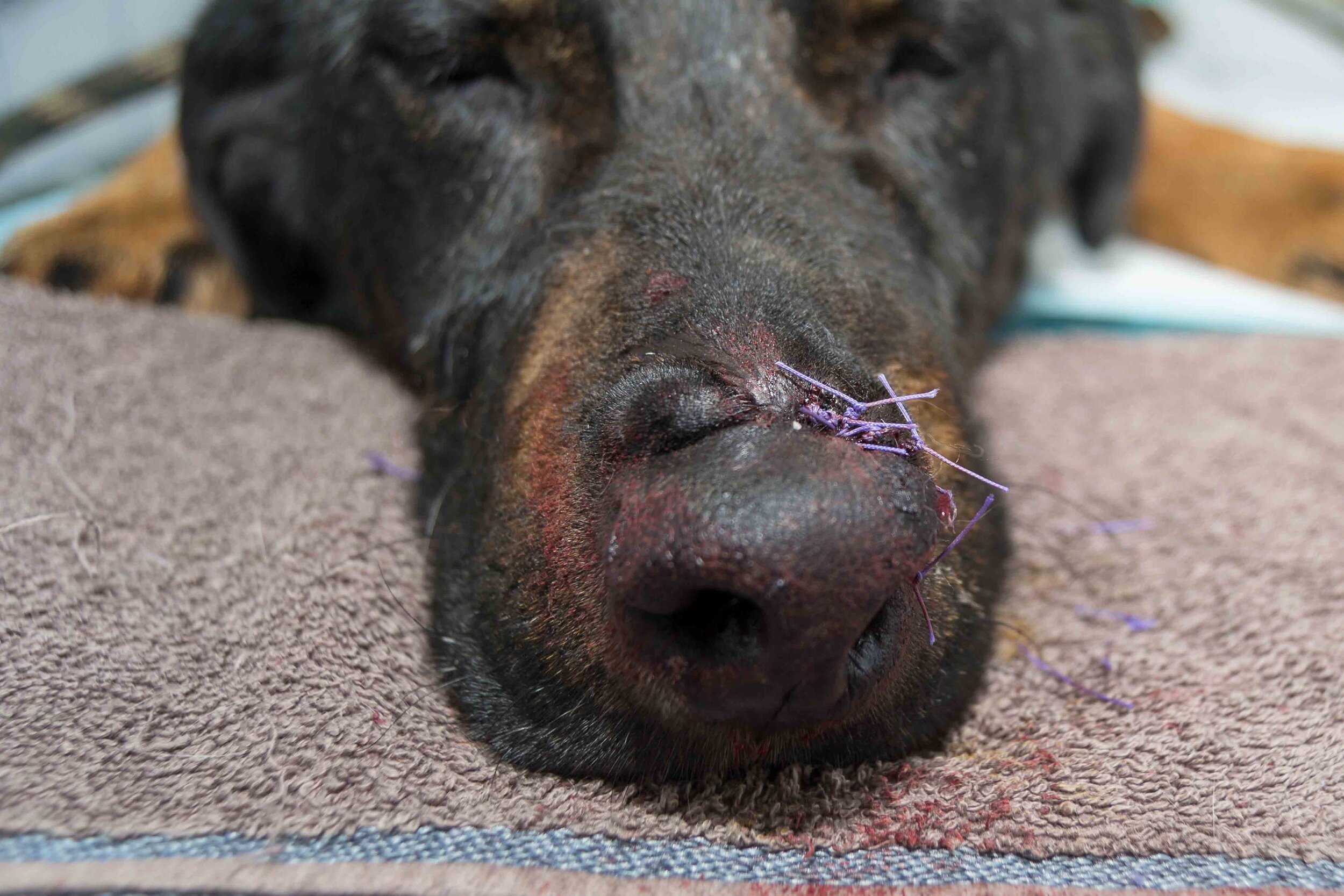Surgery
Soft Tissue Surgery
This describes surgery on skin, muscle or inside the abdomen or chest. The most common reason for a pet to undergo soft tissue surgery, apart from desexing, is to remove a growth or lump. It may also be used to investigate gastrointestinal complaints such as blockages or perforations, for repair of a skin or muscle wound, or for drainage of an abscess or cyst. As part of soft tissue surgery, your pet may have a skin or abdominal incision, tissue removed or wounds repaired. If a large amount of tissue is removed the surgeon may place a drain, to draw fluid away from the surgery site. Your pet may come away from surgery with nothing more than an expert row of neat stitches.
Abdominal
If an animal is in pain or experiencing a large accumulation of fluid or gas in their abdomen, surgery lets us explore the belly to find the cause. Prior to surgery, abdominal x-rays and ultrasound can give us more information regarding a lump, fluid retention or internal bleeding. A linear incision is made in the skin and underlying tissues to allow us to open the abdominal cavity and expose the internal organs. The surgeon can sometimes locate and correct a problem at the same time. The wound is closed by stitching (suturing) the two sides together again. It sounds dramatic, but most cats and dogs recover quickly after this procedure, depending on the cause of the problem.
Orthopaedic
This describes the surgical correction of any type of bone defect. Orthopaedic surgery often combines with a degree of soft tissue surgery as most bones are covered by degrees of soft tissue. Orthopaedic surgery is usually either the repair of a fracture, or the surgical correction of a joint problem.
Dental Surgery
Approximately 80% of dogs and cats have some form of dental disease by the age of four, but their bad breath may be the only indication, as they can be very good at hiding dental problems.
Dental disease can be as dangerous for animals as it is for humans and good dental care has been shown to add up to four years to your pet’s life.
We recommend a routine dental examination for your pet every six months in order to ensure that any problems developing in the gums and teeth are identified and corrected early. If any problems are detected, we can examine your pet’s mouth fully under anaesthetic. X-rays can be taken to identify any problems below the gum line. Visible plaque and tartar will be removed and the teeth polished. If we find any teeth that need to be extracted, we’ll always discuss our findings with you so that you are fully aware of our recommendation and the financial implications of any additional action required.
Bite Wounds
Bite wounds, usually from fighting, may not always seem serious from the outside, but they can often cause significant damage to organs and other structures in the body, not always visible externally.
Bite wounds also allow the introduction of bacteria. Although the puncture wound may heal, the bacteria can produce a deep infection and lead to an abscess. If you know your pet has been in a fight, give us a call for advice. In the case of severe attack wounds, control the bleeding and get them to us as soon as possible, being careful to protect yourself against scratches and bites, as your pet may be in shock and in a state of confusion and distress. Try to give us a call first to let us prepare for your arrival at the clinic.


